Looking to escape the hustle and bustle of city life? The Great Lakes region is dotted with hidden gems—secluded towns where tranquility reigns and nature’s beauty is on full display. From isolated islands to quiet harbor villages, these destinations offer a serene retreat away from the crowds. Whether you’re seeking a peaceful vacation spot or considering a move to a quieter locale, here’s a countdown of 10 secluded towns in the Great Lakes that promise solitude and charm.
10. Washington Island, Wisconsin – Serenity Across the Peninsula
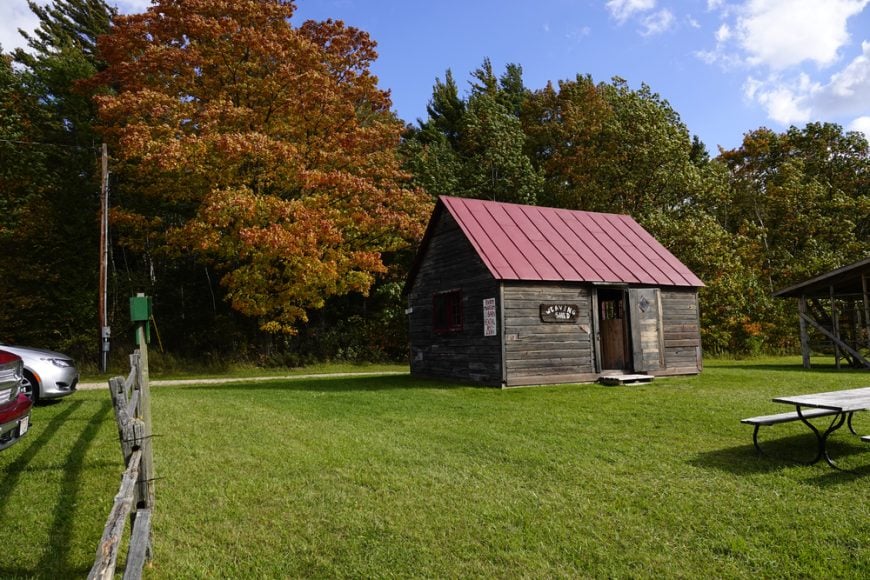
Washington Island, with a population of just over 700 residents, is a haven of peace nestled off the tip of Door County in Wisconsin. Visitors and locals alike enjoy its quiet beaches, scenic bike trails, and the fragrant lavender fields at Fragrant Isle Lavender Farm. The island’s economy is primarily driven by tourism, small-scale agriculture, and fishing. What makes Washington Island truly secluded is its island status—it can only be reached by ferry, which keeps the pace slow and the atmosphere serene. Hidden gems like Schoolhouse Beach, with its unique limestone pebbles, offer a tranquil spot that’s often free from crowds.
Where is Washington Island?
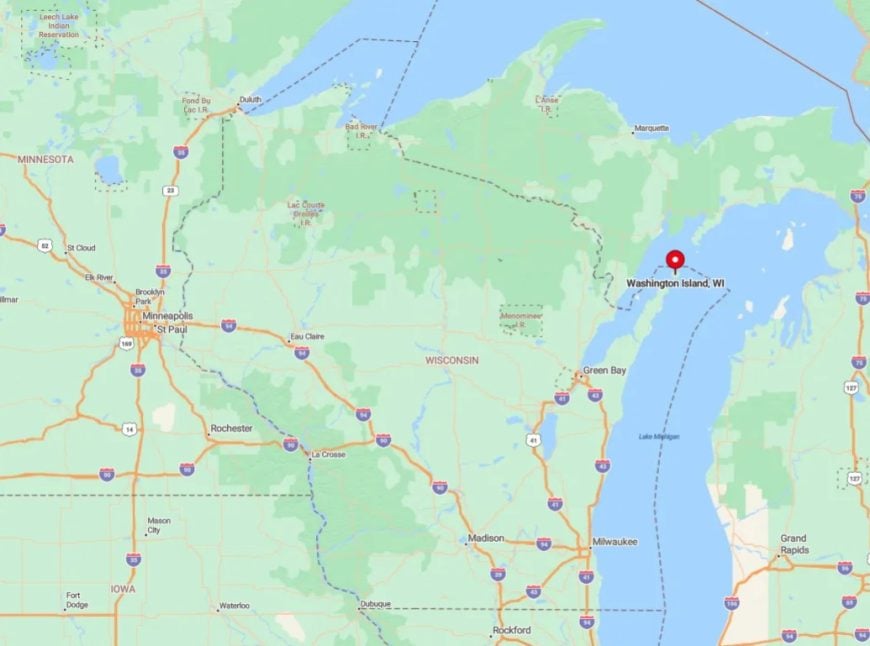
Located about seven miles northeast of the Door Peninsula’s northern tip, Washington Island sits in Lake Michigan’s waters, accessible via a 30-minute ferry ride from Northport Pier. The isolation of the island is accentuated by the surrounding lake, making it feel worlds away from the mainland’s hustle. The ferry is the primary means of reaching the island, contributing to its unhurried lifestyle. Once on the island, visitors can explore by car, bike, or on foot, embracing the quiet roads and scenic landscapes that define this secluded retreat.
9. Grand Island, Michigan – An Untouched Natural Escape
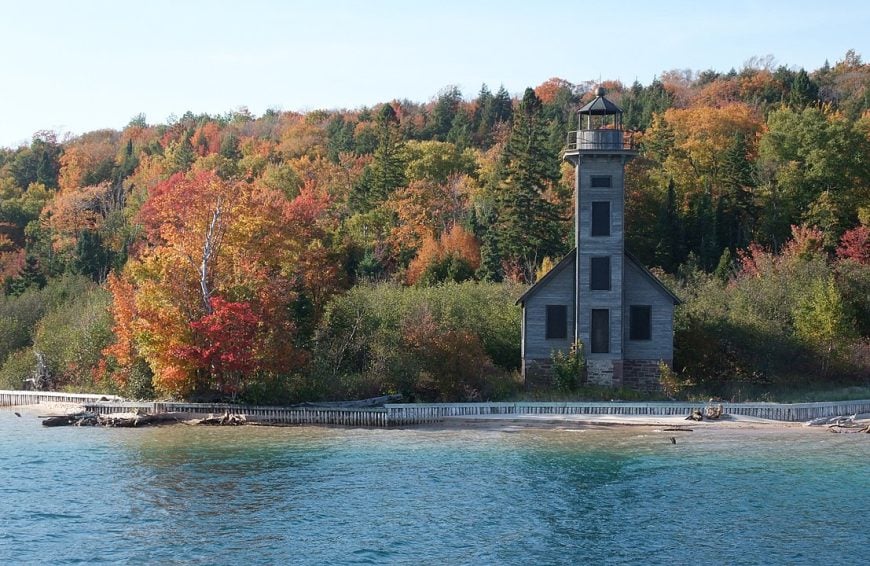
Grand Island, with a minimal permanent population, offers an untouched wilderness experience on Lake Superior. The island is a paradise for outdoor enthusiasts, featuring activities like hiking, mountain biking, and exploring dense forests and rugged cliffs. There are no industries here, aside from minimal tourism services, preserving the island’s pristine condition. Its seclusion stems from being accessible only by ferry or private boat, limiting the number of visitors and maintaining its natural serenity. Hidden gems include the old East Channel Lighthouse and secluded beaches perfect for picnics and solitude.
Where is Grand Island?
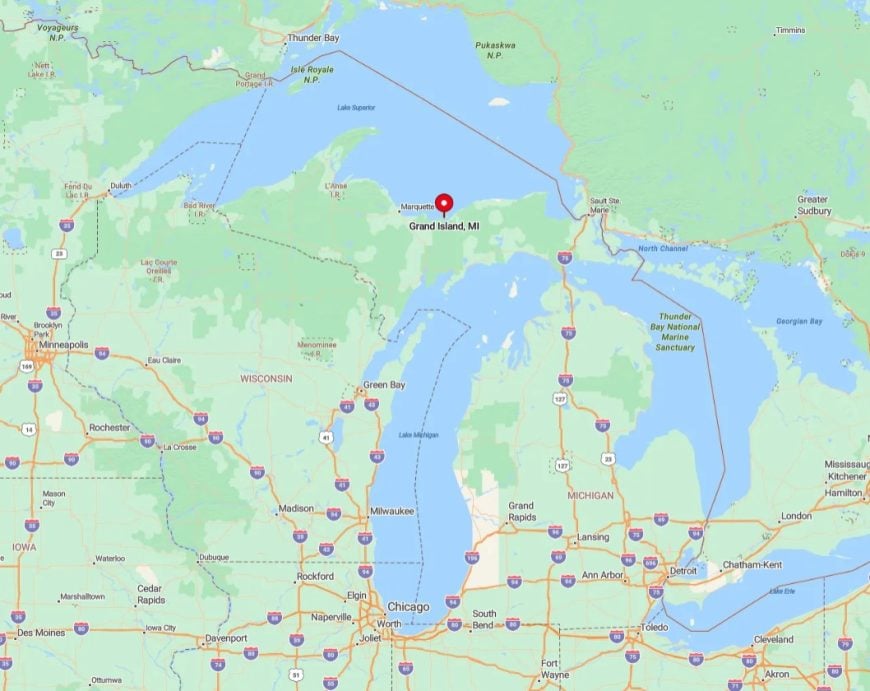
Sitting just offshore from Munising in Michigan’s Upper Peninsula, Grand Island is part of the Hiawatha National Forest. Its location on Lake Superior’s southern shore adds to its remoteness, separated from the mainland by the lake’s vast waters. To reach the island, visitors take a short ferry ride from Munising, which operates seasonally. The lack of roads and vehicles on the island means exploration is on foot or by bike, enhancing the feeling of seclusion and immersion in nature.
8. Manitoulin Island, Ontario – World’s Largest Freshwater Island
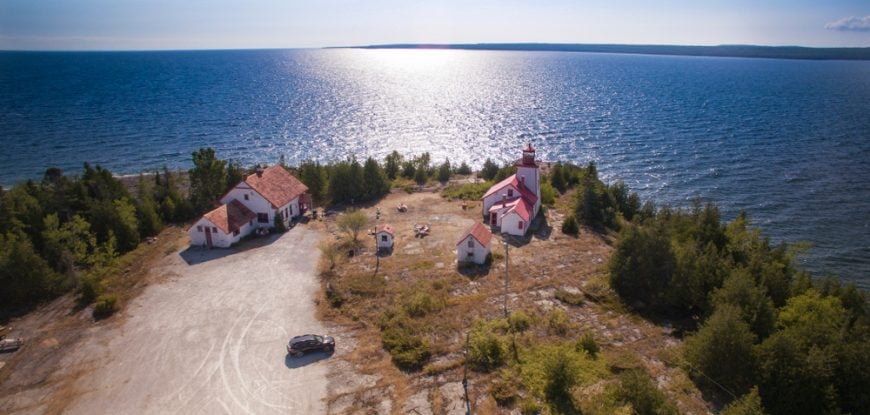
Manitoulin Island, home to around 13,000 residents, is the world’s largest freshwater island, offering expansive landscapes and a peaceful retreat. The island is rich in Indigenous culture, with several First Nations communities contributing to its heritage. Activities include kayaking on serene lakes, hiking trails like the Cup and Saucer Trail, and visiting local art galleries and museums. The economy revolves around agriculture, tourism, and small businesses. Its seclusion is due to its vast size, low population density, and the surrounding waters of Lake Huron, making it an ideal escape from urban life.
Where is Manitoulin Island?

Located in Lake Huron, Manitoulin Island is accessible via the swing bridge in Little Current or by the Chi-Cheemaun ferry from Tobermory during warmer months. The island’s remote setting is enhanced by its picturesque landscapes and quiet roads that wind through forests and along shorelines. Its separation from the mainland by the North Channel adds to the sense of isolation. Visitors can drive or cycle across the island, exploring quaint villages and untouched natural areas that contribute to its tranquil atmosphere.
7. Munising, Michigan – Gateway to Pictured Rocks
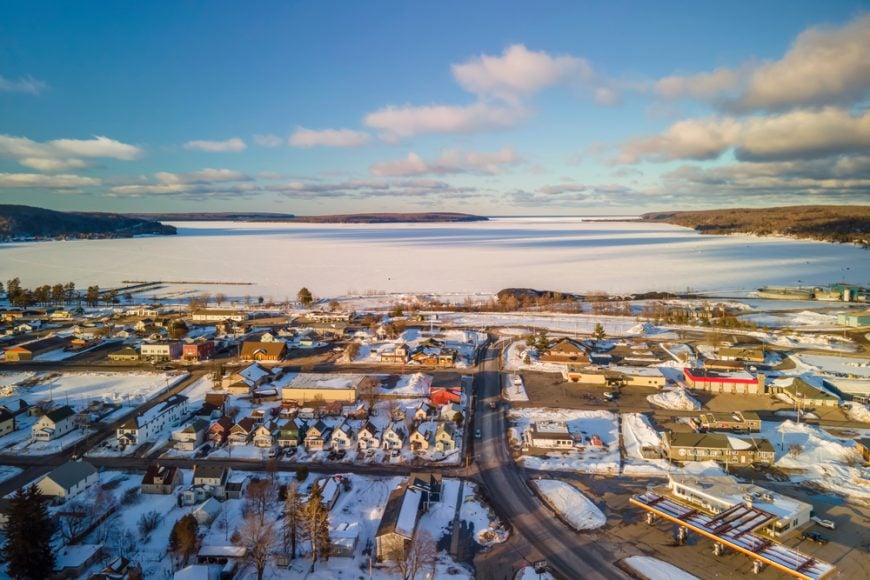
Munising, with a population of about 2,300, is a small town nestled on the shores of Lake Superior. It’s best known as the gateway to Pictured Rocks National Lakeshore, where visitors can marvel at colorful sandstone cliffs, hike scenic trails, and discover hidden waterfalls like Munising Falls. The town’s economy centers on tourism, especially outdoor recreation and hospitality services. Munising’s secluded charm comes from its location amid vast forests and the expansive lake, offering a peaceful environment far from urban noise. Lesser-known spots like the Grand Island East Channel Lighthouse add to its quiet allure.
Where is Munising?

Situated in Michigan’s Upper Peninsula, Munising is about 43 miles east of Marquette along M-28. Its remote location on Lake Superior’s southern shore contributes to its seclusion, surrounded by the Hiawatha National Forest. The town is accessible by car, but its distance from major cities keeps visitor numbers relatively low compared to more populous areas. This tranquility, combined with the natural beauty of the lake and forests, makes Munising a secluded haven for nature lovers.
6. Tobermory, Ontario – The Scuba Diving Capital of Canada

Tobermory is a small harbor village with a population of around 500, renowned for its crystal-clear waters and abundant marine life. It’s a hotspot for scuba divers exploring shipwrecks in Fathom Five National Marine Park and for hikers tackling the Bruce Trail. The local economy relies heavily on tourism, particularly during the summer months. The town’s seclusion is a result of its location at the northern tip of the Bruce Peninsula, surrounded by Georgian Bay and Lake Huron, offering a tranquil setting away from urban centers. Hidden treasures like Flowerpot Island add to its unique charm.
Where is Tobermory?

Located approximately 300 kilometers northwest of Toronto, Tobermory sits at the end of Highway 6 on the Bruce Peninsula in Ontario. Its remote position is emphasized by the surrounding waters and the narrow roads leading into town. Visitors can reach Tobermory by car or via the Chi-Cheemaun ferry from Manitoulin Island during the ferry season. The town’s isolation provides a peaceful retreat for those willing to venture off the beaten path.
5. Leland, Michigan – Historic Fishtown by the Lake

Leland is a quaint village with a population of around 400, known for its historic district called Fishtown. This area features preserved fishing shanties, smokehouses, and docks that harken back to the town’s commercial fishing heritage. Visitors can enjoy charter fishing, visit local boutiques, or taste freshly smoked fish. The main industries include tourism and small-scale fishing operations. Leland’s seclusion comes from its location on the Leelanau Peninsula between Lake Michigan and Lake Leelanau, offering a peaceful lakeside atmosphere. Hidden gems like Van’s Beach provide a quiet spot to watch stunning sunsets.
Where is Leland?

Leland is situated approximately 25 miles northwest of Traverse City, Michigan, accessible via M-22, a scenic highway known for its picturesque views. The town’s placement on a narrow peninsula adds to its secluded feel, surrounded by water on three sides. While accessible by car, its distance from larger cities helps maintain a calm and unhurried environment. The serene landscapes and historic charm make Leland a secluded destination along Lake Michigan’s shoreline.
4. Killarney, Ontario – Wilderness Retreat on Georgian Bay

Killarney is a small village with a population of about 500, offering spectacular views of Georgian Bay and the La Cloche Mountains. Outdoor activities abound, including kayaking among the bay’s granite islands, hiking in Killarney Provincial Park, and fishing in crystal-clear waters. The economy is driven by tourism and fishing, with the village maintaining a close connection to its natural surroundings. Killarney’s seclusion is due to its remote location and limited access routes, providing an untouched wilderness experience. The stunning views from the Topaz Lake Trail are a hidden gem for those seeking solitude.
Where is Killarney?
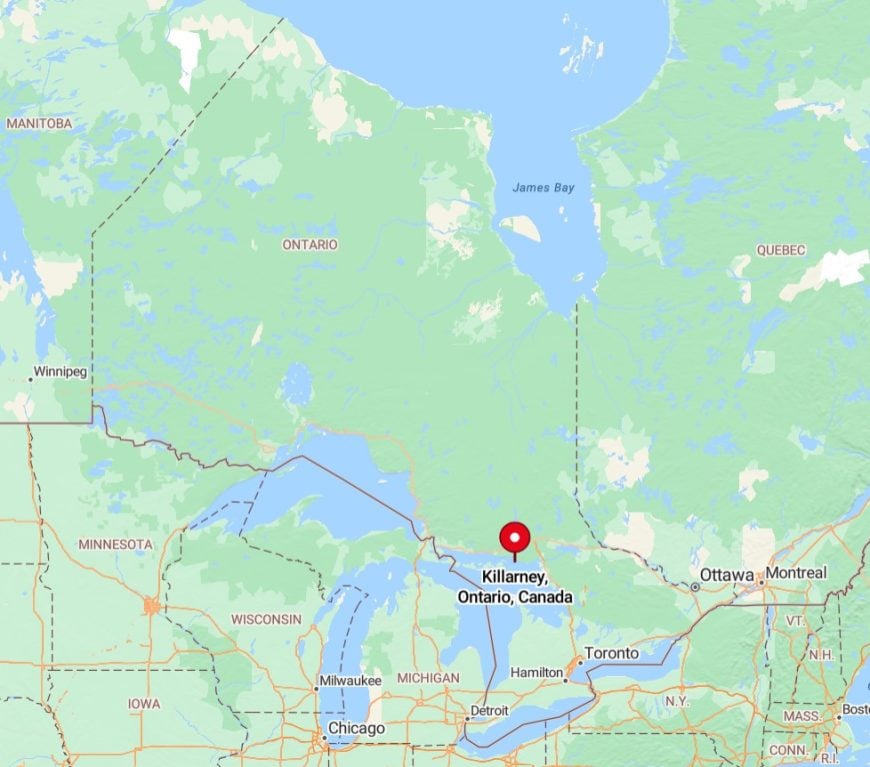
Located on the northern shore of Georgian Bay in Ontario, Killarney is approximately 100 kilometers southwest of Sudbury. The primary route to the village is via Highway 637, a single road that winds through dense forests and rugged terrain. This limited accessibility enhances its secluded nature. Boaters can also reach Killarney via the bay, adding to its appeal for sailing enthusiasts. The remote setting and natural beauty make it a peaceful retreat away from populated areas.
3. Grand Marais, Minnesota – Artistic Haven on the North Shore
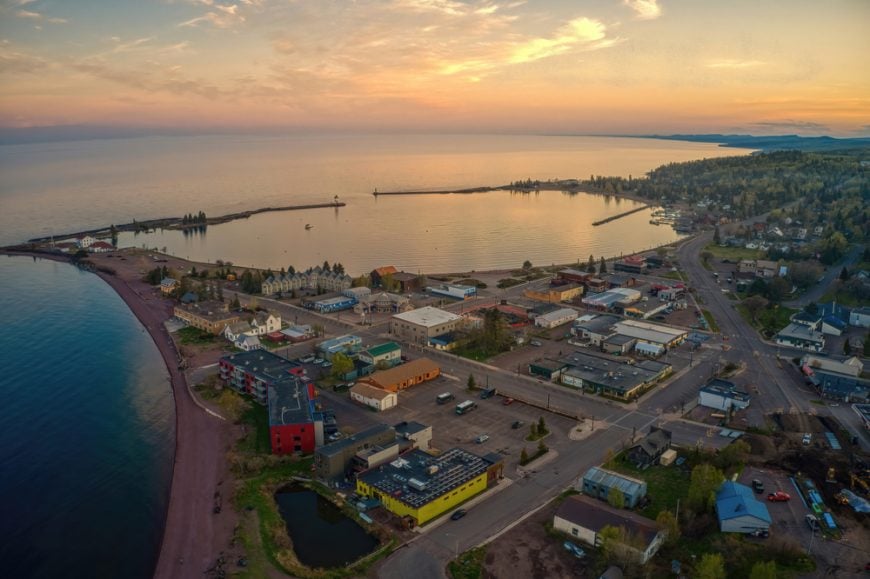
Grand Marais, home to about 1,300 residents, is a charming town on Lake Superior’s North Shore known for its vibrant arts scene. Visitors can explore galleries, attend workshops at the North House Folk School, or enjoy performances at the Grand Marais Playhouse. The local economy revolves around arts, tourism, and small businesses catering to outdoor activities like kayaking and hiking in the nearby Boundary Waters Canoe Area Wilderness. Its seclusion is attributed to its location far up the shoreline, offering a peaceful environment enriched by creative energy. Hidden gems like Artist’s Point provide a tranquil spot for reflection and sketching.
Where is Grand Marais?

Situated approximately 110 miles northeast of Duluth, Minnesota, Grand Marais is accessible via Highway 61, which hugs Lake Superior’s scenic coastline. The town’s remote location near the Canadian border enhances its secluded feel, surrounded by vast forests and the expansive lake. The drive itself is part of the allure, with breathtaking views and relatively light traffic. This remoteness contributes to the town’s quiet charm and appeal to those seeking both solitude and inspiration.
2. Bayfield, Wisconsin – Gateway to the Apostle Islands
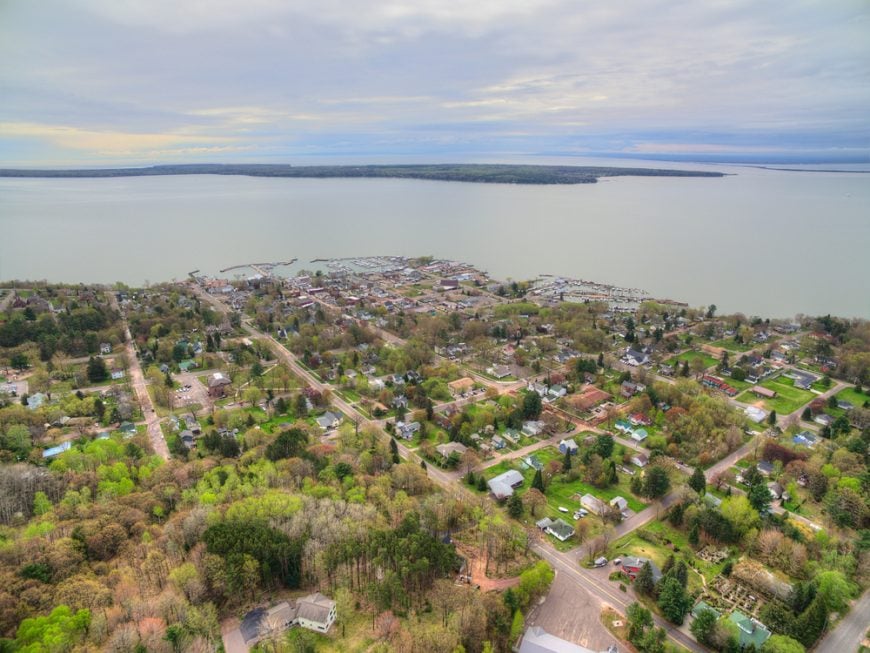
Bayfield, a town of about 500 residents, is a quaint lakeside community offering access to the Apostle Islands National Lakeshore. Visitors can embark on boat tours, kayak among the sea caves, or attend seasonal events like the Bayfield Apple Festival. The economy is centered on tourism, with a focus on maritime activities and local crafts. Bayfield’s seclusion comes from its small size and location at the tip of the Bayfield Peninsula on Lake Superior. With its picturesque harbor and quiet streets, it provides a peaceful atmosphere away from crowded destinations. Little-known attractions like the Bayfield Maritime Museum offer insights into the town’s nautical heritage.
Where is Bayfield?
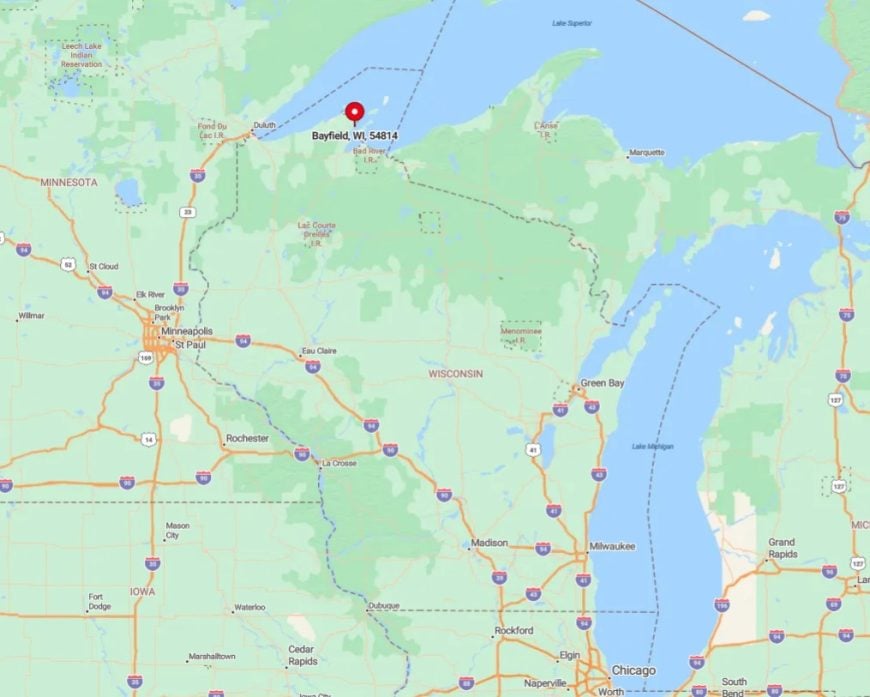
Located in northern Wisconsin, Bayfield is approximately 85 miles east of Duluth, Minnesota, accessible via Highway 13. The town’s position on the peninsula, surrounded by water on three sides, adds to its secluded feel. The relative remoteness and the scenic drive through forests and along the lake shore make getting there part of the experience. Ferry services to the Apostle Islands and Madeline Island further accentuate Bayfield’s role as a tranquil gateway to natural splendor.
1. Copper Harbor, Michigan – Edge of the Keweenaw
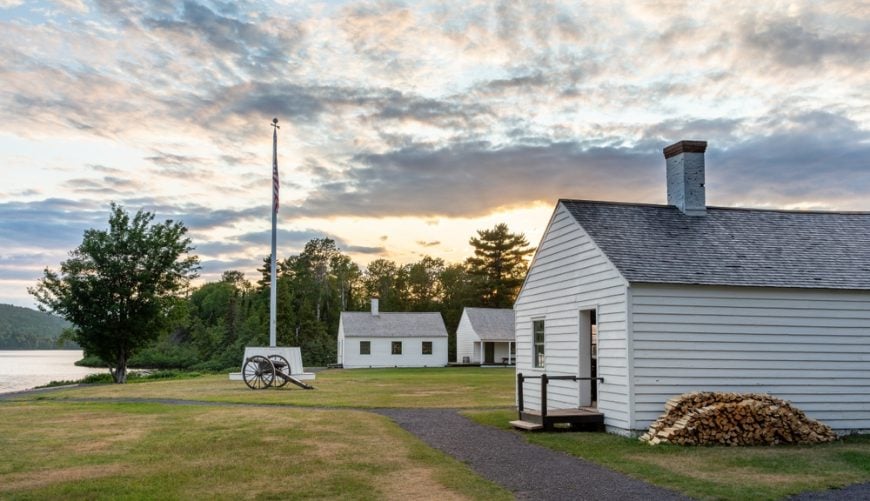
Copper Harbor, with a population of around 100, sits at the northernmost point of Michigan’s Keweenaw Peninsula. The town is renowned for its pristine natural landscapes, rugged shoreline, and as a haven for outdoor activities like mountain biking, hiking, and kayaking. The local economy is primarily driven by tourism, with a historical nod to its copper mining past. Copper Harbor’s seclusion is pronounced due to its remote location, limited accessibility, and harsh winters, offering solitude for those seeking a retreat by Lake Superior. Hidden gems include the Copper Harbor Lighthouse and the Estivant Pines Wilderness Nature Sanctuary, where ancient trees stand tall.
Where is Copper Harbor?

Located at the very tip of the Keweenaw Peninsula in Michigan’s Upper Peninsula, Copper Harbor is accessible via US Highway 41, which ends in the town. The journey involves a long, scenic drive through dense forests and along the Lake Superior shoreline. Its remote position, far from major cities and surrounded by water and wilderness, contributes to its isolated charm. The area’s natural beauty and lack of urban development make it a perfect destination for those looking to disconnect and immerse themselves in nature.






